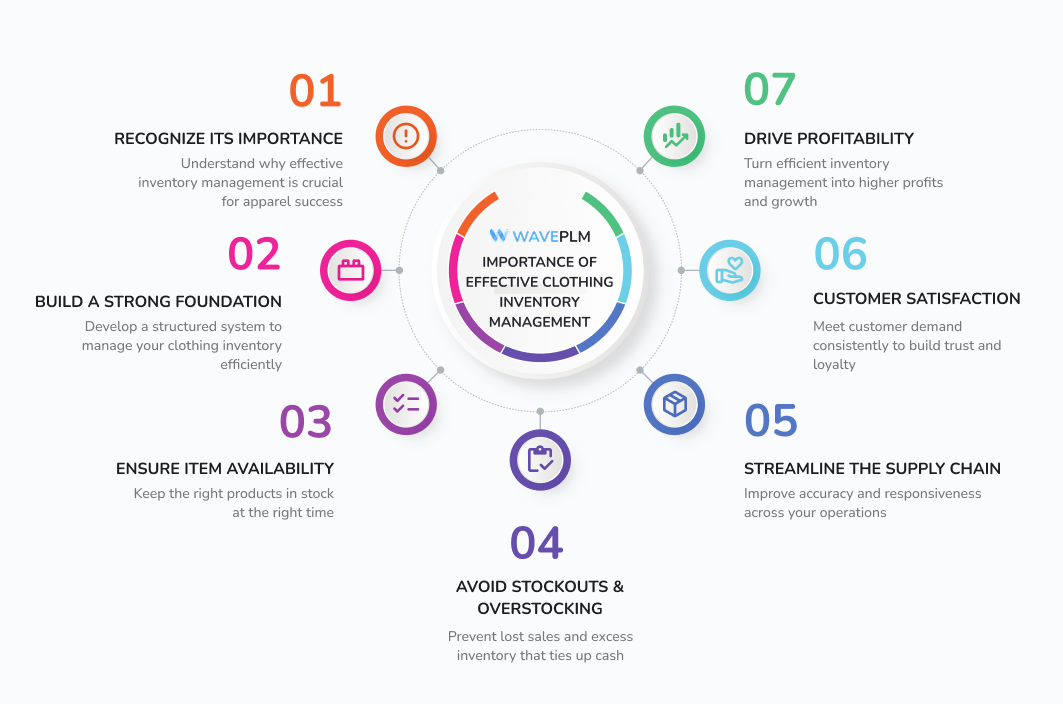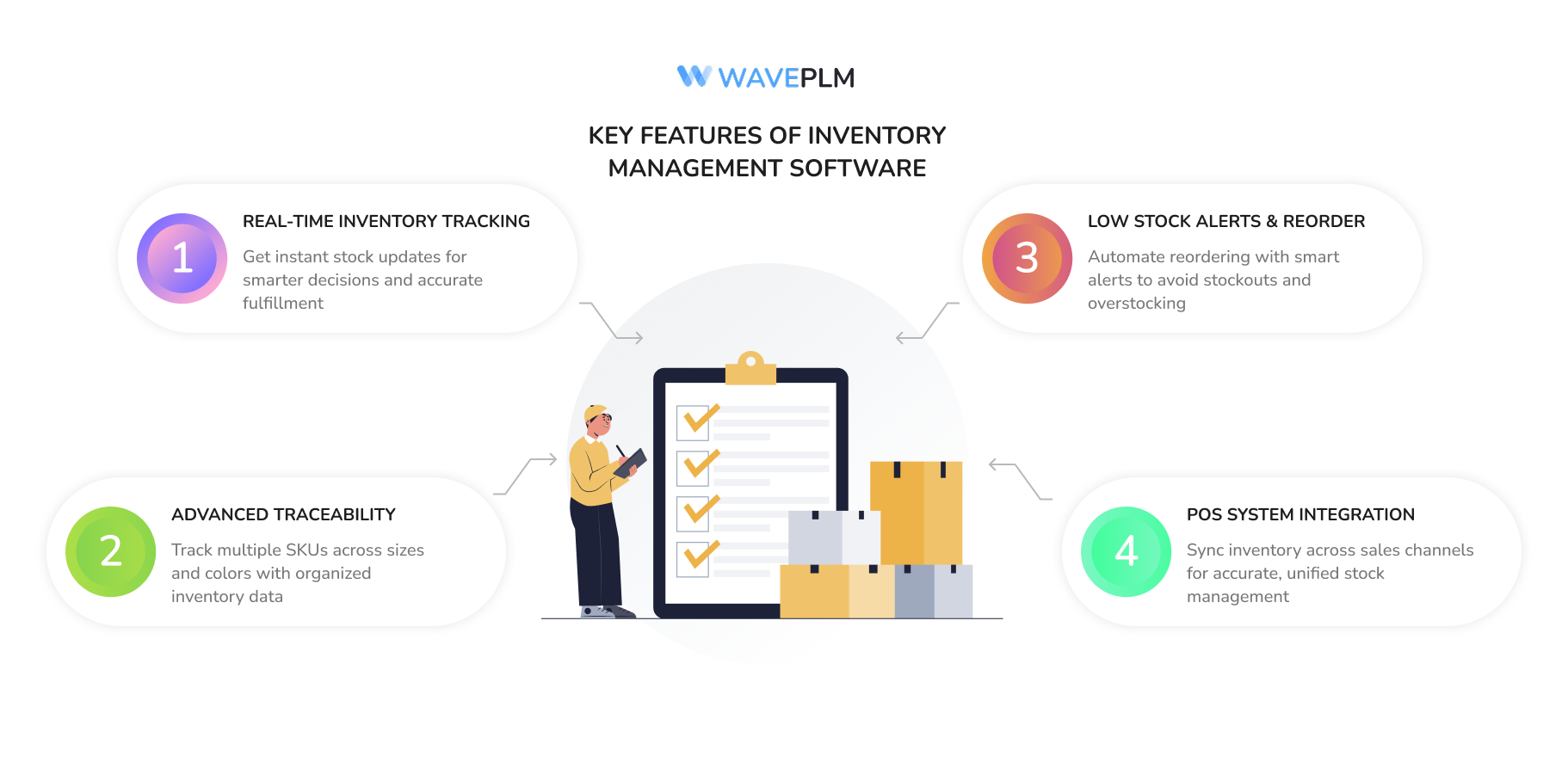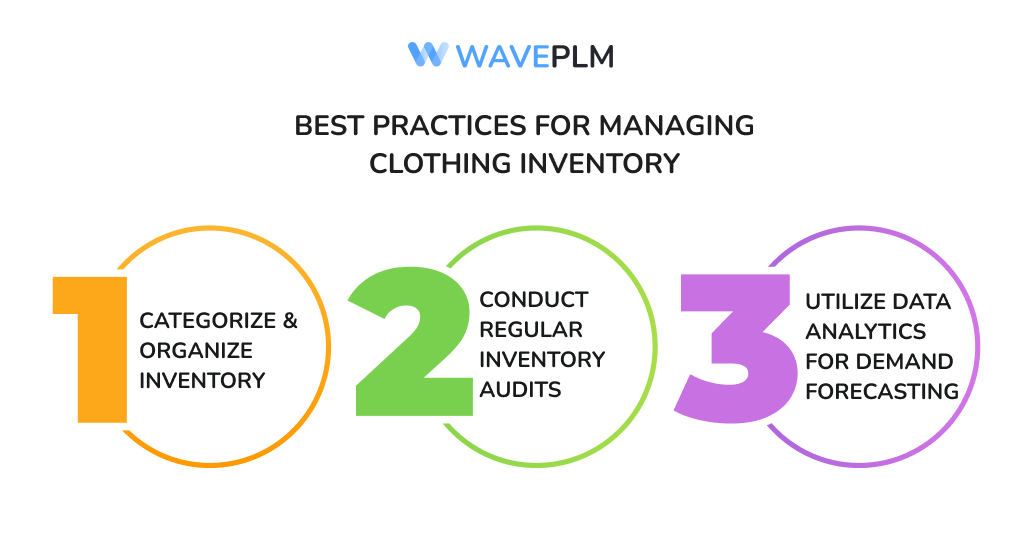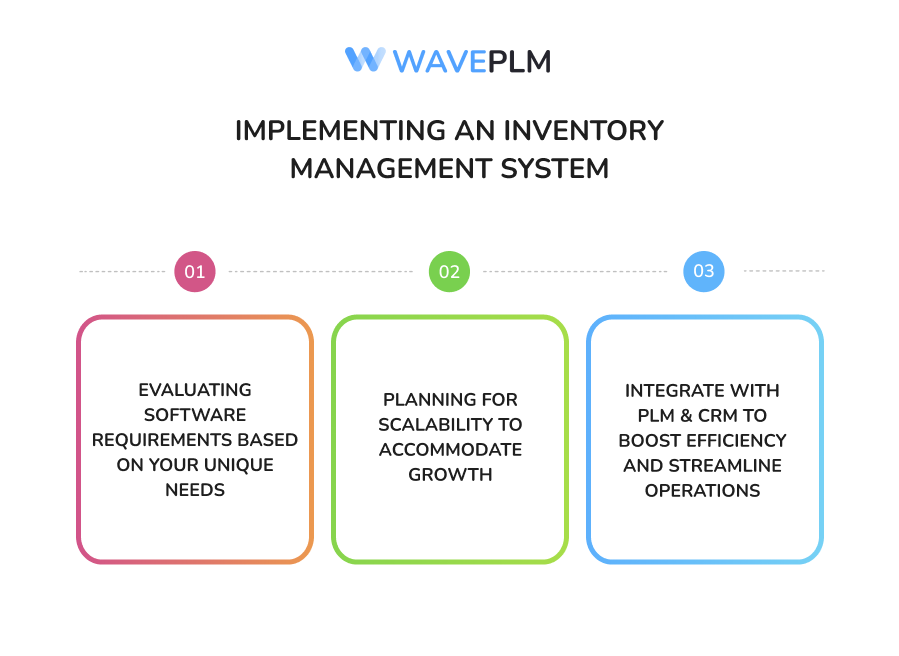
Wondering how to keep track of clothing inventory? This article offers clear steps and tools to help you manage your stock, avoid stockouts and overstock, and improve customer satisfaction.
Key Takeaways
- Effective clothing inventory management is essential for preventing stockouts and overstocks, enhancing customer satisfaction, and improving overall profitability.
- Automated inventory systems and technology, such as barcode and RFID, improve accuracy, efficiency, and real-time tracking capabilities for inventory management.
- Implementing best practices like regular audits, demand forecasting through data analytics, and integrating inventory management systems with POS tools are crucial for successful inventory management in apparel retail.
Importance of Effective Clothing Inventory Management
Effective clothing inventory management is crucial for the success of any apparel business. A well-structured clothing inventory management system can significantly enhance operational efficiency, streamline supply chain accuracy, and ultimately lead to higher profitability. Apparel inventory management helps having the right items available at the right time, which helps businesses avoid the pitfalls of stockouts and overstocks, both of which can severely impact sales and customer satisfaction. Apparel inventory management important is a key aspect to consider for any business aiming for success.
Not only does efficient inventory management help in maintaining optimal stock levels, but good inventory management also contributes to a better customer experience. When customers can rely on your store to have the products they want, they are more likely to return.
This guide will delve into the various aspects of fashion inventory management and retail operations, from preventing stockouts and overstocks to enhancing customer satisfaction, ensuring that your business thrives in the competitive world of fashion retail.
Prevent Stockouts and Overstocks
Stockouts and overstocks are two sides of the same coin, both detrimental to a retail business. Stockouts can lead to lost sales and disappointed customers, while overstocks tie up capital in unsold merchandise. Effective inventory management keeps track of inventory levels to avoid these issues. Setting minimum and maximum stock levels helps maintain a balanced inventory, ensuring just the right amount of how much stock is on hand.
Automated inventory management systems play a crucial role in preventing stockouts and overstocks. These inventory system provide low stock alerts and generate purchase orders automatically when stock levels drop below a certain threshold.
Additionally, utilizing inventory management analytics tools allows retailers to track item sales and adjust stock levels accordingly, ensuring that they can meet customer demand without overstocking and stay updated on inventory trends.
Enhance Customer Satisfaction
Customer satisfaction is the lifeblood of any retail business. Maintaining accurate inventory levels is vital to meet customer demand and enhance their shopping experience. When popular sizes and styles are always available, customers are more likely to have a positive shopping experience and return for future purchases.
Analyzing customer purchase data is another essential aspect of enhancing customer satisfaction. Understanding past purchases, browsing behavior, and size trends allows businesses to stock the most relevant items, ensuring customers find what they are looking for. Informed inventory decisions lead to a more personalized shopping experience, further boosting customer loyalty and satisfaction.

Methods for Tracking Clothing Inventory
Tracking clothing inventory is a multifaceted process, and choosing the right method for tracking inventory is crucial for efficient management. Manual tracking methods, such as using checklists and spreadsheets, are common but can be time-consuming and prone to errors. As businesses grow, transitioning to more sophisticated methods becomes necessary to maintain accuracy and efficiency.
Automated inventory systems and technologies like barcode and RFID are game-changers in inventory management. These methods enhance operational efficiency, reduce errors, and provide real-time tracking capabilities. We’ll explore each method, examining their benefits and limitations.
Manual Inventory Tracking
Manual inventory tracking methods, such as using checklists and spreadsheets like Excel or Google Sheets, are often the go-to for small businesses just starting. However, these methods can be cumbersome, time-consuming, and prone to errors, leading to incorrect stock counts and inventory discrepancies.
While they may suffice for businesses with limited stock, growing retailers will find that transitioning to more automated systems is necessary for maintaining accurate and efficient inventory management.
Automated Inventory Systems
Automated inventory systems bring a new level of efficiency and accuracy to inventory management. These systems allow businesses to:
- Maintain robust warehousing competency
- Have complete control over stock distribution
- Automate restocking
- Track stock levels
- Generate reports with inventory management software
These improvements enhance accuracy and free up time for growth-focused activities.
Tools like Fabrikatör have proven to significantly enhance inventory management for businesses. For instance, Swoveralls reduced their reordering time from hours to just 20 minutes by adopting Fabrikatör.
Automated systems also simplify communication with suppliers by including supplier SKUs in purchase orders and setting up alerts for stock levels, enhancing supplier management.
Barcode and RFID Technology
Barcode and RFID technology are essential tools for improving inventory accuracy and operational efficiency. Mobile barcode scanning devices allow for quick and precise stock checks and order fulfillment. RFID technology takes it a step further by facilitating even quicker stock checks compared to traditional methods.
Utilizing item tags printed with barcodes that include details such as SKU, GTIN, item name, price, and size, businesses can streamline their inventory tracking processes significantly.
Key Features of Inventory Management Software

Effective inventory management software is equipped with features that streamline processes and ensure accurate tracking of inventory. From real-time inventory tracking to low stock alerts and integration with POS systems, these features are designed to enhance operational efficiency and improve stock management.
We’ll explore these key features in detail, highlighting their importance and how they contribute to effective inventory management.
Real-Time Inventory Tracking
Real-time inventory tracking is a game-changer for retail businesses. This feature provides instant updates on stock levels, aiding in quick decision-making and preventing inventory mismatches. For example, the ShipHero integration in Fabrikatör streamlines order fulfillment by syncing purchase orders and providing real-time stock accuracy.
Traceability is especially important for apparel stores, which often manage numerous product SKUs with different colors and sizes. Categorizing inventory simplifies tracking, replenishment, and analysis, ensuring that businesses can keep track of their inventory efficiently.
Low Stock Alerts and Reorder Points
Low stock alerts and reorder points are essential features for maintaining optimal inventory levels. Automated reordering features can generate purchase orders based on predefined inventory thresholds, ensuring that stockouts are avoided.
Custom rules for reorder points and ideal quantities provide flexibility in inventory management, allowing businesses to maintain the right stock levels without overstocking.
Integration with POS Systems
Integrating inventory management with POS systems helps synchronize stock levels across all selling channels, reducing errors and discrepancies. This synchronization ensures that retailers can minimize stockouts or overstocks, enhancing overall inventory accuracy.
Shopify POS, for example, seamlessly tracks inventory across both online and in-person sales channels, making inventory management more efficient.
Best Practices for Managing Clothing Inventory
Implementing best practices for managing clothing inventory is essential for maximizing efficiency and profitability. From categorizing and organizing inventory to conducting regular audits and utilizing data analytics, these practices ensure that inventory levels are accurately monitored and replenished in a timely manner.
We’ll explore these best practices in detail, providing actionable insights for effectively managing your clothing inventory.
Categorize and Organize Inventory
Categorizing and organizing inventory is crucial for ensuring accurate stock monitoring and timely replenishment. Grouping items based on categories such as type, size, and season streamlines inventory management processes, making it easier to track inventory levels and identify items that need restocking.
This organization also helps in optimizing storage space and improving overall operational efficiency.
Conduct Regular Inventory Audits
Regular inventory audits are essential for verifying quantities and highlighting discrepancies, including inventory errors and inventory counts. These audits help uncover discrepancies due to theft, loss, or administrative errors, ensuring compliance with financial reporting standards.
Conducting regular stock audits and reorder processes is a key strategy for maintaining optimal inventory levels and minimizing excess inventory.
Utilize Data Analytics for Demand Forecasting
Data analytics plays a crucial role in demand forecasting and inventory planning. Analyzing historical sales data allows businesses to predict future sales trends and customer preferences, ensuring they stock the right products in the right quantities. Demand forecasting allows retailers to align their inventory levels with customer demand, minimizing surplus inventory and maximizing sales.
Analyzing customer purchase patterns provides valuable insights that help refine stock levels and make informed inventory decisions. This proactive approach to inventory management ensures that businesses are well-prepared to meet customer demand and adapt to market trends.

Top Apparel Inventory Management Tools
Choosing the right inventory management tools is crucial for apparel retailers to ensure effective stock management and enhanced operational efficiency. From user-friendly platforms like Zoho Inventory to robust systems like Magestore, there are various options available to suit different business needs.
We’ll explore some of the top apparel inventory management tools, highlighting their key features and benefits.
Shopify POS
Shopify POS is a popular choice for apparel retailers, offering features such as:
- Managing warehouse/store inventory
- Forecasting demand
- Low stock alerts
- Creating purchase orders
With a starting price of $39/month, Shopify point of sale facilitates easy in-person selling and streamlined inventory management, making it an excellent option for retail businesses.
Lightspeed Retail
Lightspeed Retail is a cloud-based POS and inventory management system designed for a retail store. With real-time tracking, accessibility from any device, and scalability, Lightspeed Retail offers a comprehensive solution for managing inventory.
Starting at $89/month, it includes features for creating purchase orders and managing supplier catalogs, making it suitable for fashion retailers.
Fishbowl
Fishbowl is ideal for apparel retailers with complex inventory needs, offering multi-location inventory management and seamless integration with other tools. Fishbowl helps businesses monitor stock levels and sales trends across different warehouses, optimizing inventory management and improving cash flow.
Common Challenges in Clothing Inventory Management
Clothing inventory management comes with its own set of challenges, including inconsistent tracking across channels, managing excess inventory, and accurate demand planning. Poor inventory management can lead to customer dissatisfaction, lost sales, and negatively impact profitability.
We’ll discuss these common challenges in detail and provide strategies to overcome them.
Inconsistent Tracking Across Channels
Inconsistent tracking across multiple sales channels is a significant challenge for apparel retailers. Using disparate tracking systems can lead to errors, delays, and stock discrepancies, ultimately affecting customer satisfaction and sales.
Implementing a unified inventory tracking system that synchronizes inventory data across all channels ensures accurate and real-time updates, reducing the risk of errors and improving overall efficiency.
Managing Excess Inventory
Excess inventory can be a costly problem for retailers, leading to obsolete stock and wasted capital on storage. It can also result in lost sales and dissatisfied customers when the focus shifts away from stocking in-demand items. Implementing strategic promotions, bundling slow-moving items, and utilizing dropshipping for hard-to-stock products are effective strategies to reduce excess inventory.
Proactively managing overstock issues involves:
- Monitoring inventory and aligning stock levels with current sales trends and consumer demand.
- Adjusting stock levels in anticipation of peak seasons.
- Negotiating flexible terms with suppliers to help minimize carrying costs and maintain optimal stock levels.
Accurate Demand Planning
Accurate demand planning is essential for maintaining optimal stock levels and ensuring customer satisfaction. Poor demand planning can lead to significant financial losses due to stockouts and excess inventory. Understanding market trends and customer behavior is key to predicting future demand and making informed inventory decisions.
Utilizing data analytics and historical sales data helps businesses analyze sales trends, align inventory levels with customer demand, reducing the risk of stock discrepancies and financial losses.
Implementing an Inventory Management System
Implementing an inventory management system requires careful planning and consideration of your business needs, including enterprise resource planning. Key aspects include:
- Evaluating software requirements based on your unique needs
- Planning for scalability to accommodate growth
- Integrating inventory management software with existing systems like PLM and CRM to streamline operations and improve overall efficiency.
We’ll outline the steps to implement an inventory management system effectively, from assessing business needs to training staff and monitoring the system.

Assess Business Needs
Identifying specific inventory management needs helps in selecting the right software to streamline operations. Understanding the specific goals and challenges of your business is crucial when selecting an appropriate inventory management solution.
Assessing factors such as inventory volume, sales channels, and integration requirements ensures that the chosen system aligns with your business objectives and supports future growth.
Train Staff Effectively
Effective staff training is essential in inventory management as it ensures that employees understand the inventory systems and processes. Providing comprehensive training and hands-on practice with inventory management tools helps build confidence and reinforces learning.
All team members should have access to inventory management tools and be encouraged to collaborate, facilitating efficient inventory management and streamlined operations.
Monitor and Adjust
Continuous monitoring and adjustment of inventory practices are crucial for adapting to changing market conditions and ensuring business growth. Evaluating and adjusting your inventory strategy helps identify areas for improvement, such as stock levels or pricing strategies.
Regularly reviewing inventory performance and making necessary adjustments ensures that your inventory management system remains effective and aligned with business objectives.
Summary
Effective clothing inventory management is key to the success of any apparel business. From preventing stockouts and overstocks to enhancing customer satisfaction and utilizing data analytics for demand forecasting, implementing the right inventory management practices and tools can significantly improve operational efficiency and profitability. By categorizing and organizing inventory, conducting regular audits, and leveraging advanced technologies like barcode and RFID, businesses can maintain accurate inventory levels and meet customer demand consistently.
Investing in robust inventory management software and integrating it with POS systems ensures real-time tracking and synchronized stock levels across all sales channels. Training staff effectively and continuously monitoring and adjusting inventory strategies are essential for maintaining optimal stock levels and adapting to market trends. By following these best practices and utilizing top inventory management tools like Shopify POS, Lightspeed Retail, and Fishbowl, apparel retailers can achieve efficient inventory management and drive business growth.
Frequently Asked Questions
Why is effective clothing inventory management important for apparel retailers?
Effective clothing inventory management is crucial for apparel retailers as it boosts operational efficiency, minimizes waste, and ensures customer satisfaction by having the right products available when needed. This not only drives sales but also fosters customer loyalty.
What are the benefits of using automated inventory systems?
Utilizing automated inventory systems significantly enhances accuracy and streamlines operations, enabling real-time tracking that allows businesses to concentrate on growth while minimizing manual stock management.
How can data analytics help in demand forecasting?
Data analytics enhances demand forecasting by enabling businesses to analyze historical sales data and customer behavior, resulting in more accurate predictions and informed inventory planning. This leads to better resource allocation and improved customer satisfaction.
What are some common challenges in clothing inventory management?
Inconsistent tracking across sales channels, managing excess inventory, and accurate demand planning are significant challenges in clothing inventory management. Addressing these issues is crucial for maintaining efficient operations and meeting customer demand effectively.
What are the key features of effective inventory management software?
Effective inventory management software should have real-time inventory tracking, low stock alerts, automated reordering, and seamless integration with POS systems to maintain synchronized stock levels. These features ensure optimal inventory control and efficiency.





Leave a Reply